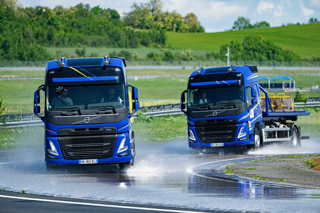Below 7°C, cold weather tyres (CWTs) perform better than standard tyres.
That’s what we’ve been told in the past; however, that’s not true in all cases.
On wet, icy and snowy roads CWTs have a clear advantage. But tests by both BTMA and What Car? reveal they take longer to stop at 5°C on dry roads.
Michelin refutes the findings, saying that “if you compare premium CWTs and premium summer tyres then the stopping distances will improve in any conditions (dry, wet, ice or snow) at 7°C and below”.
In response, BTMA says: “In cold and dry conditions, it is possible that summer tyres provide slightly shorter stopping distances.”
Continental acknowledges that standard tyres may perform better than CWTs in cold, dry conditions because “summer tyres are more tuned to dry braking and dry handling”. But it says that the difference is “minimal”.
“We expect summer and winter tyres to be very similar below 7°C in dry conditions.”
Despite the test results the BTMA still advocates the use of CWTs.
It says: “During the winter months, the road surface is very often damp or wet. Also it is not uncommon for the roads to change from dry to wet instantly due to a sudden downpour. In these conditions, the stopping performance of summer tyres may become reduced and unpredictable at precisely the time that you need grip, therefore, the safest and most predictable solution is fitting winter tyres.”
Click here for further analysis on the benefits and arguements for and against cold weather tyres





















Login to comment
Comments
No comments have been made yet.